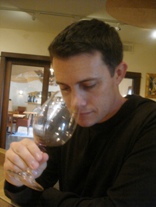What wineries can teach us about service
 Me smelling the 'bouquet' at ConsentinoMy wife, Sally, and I recently returned from our annual trip to Napa Valley to taste wine, tour wineries, and relax a little. The service and hospitality you experience at most wineries is amazing and some of the techniques they use can be readily applied to other situations. Here are a few examples:
Me smelling the 'bouquet' at ConsentinoMy wife, Sally, and I recently returned from our annual trip to Napa Valley to taste wine, tour wineries, and relax a little. The service and hospitality you experience at most wineries is amazing and some of the techniques they use can be readily applied to other situations. Here are a few examples:
There's a fine line between banter and shtick.
I often enjoy some friendly banter with people who are providing me with customer service. Many of the people I met in Napa Valley were great at engaging us in conversation. They'd ask questions like, "Where else have you visited?" or "Have you been to Napa Valley before?" or "Where are you from?". Their questions inevitably led to a more engaging experience and more chances for them to sell us their great wine.
On the other hand, I'm generally annoyed by shtick. 'Shtick' is when the winery host delivers a standard presentation, often well-rehearsed, that's long on personality but short on any real connection. They may provide all sorts of interesting and amazing facts about the winery, but they couldn't care less about answering my specific questions.
Banter is great -- it focuses on the customer or mutual interests. Shtick is almost never good.
It's OK to educate, just don't make stuff up
Sally and I love being educated about wines. We like to ask all sorts of questions about how the wine is made, how the wine maker achieved a certain style or flavor, and even what food they'd recommend pairing with the wine. Visiting a winery can be a great learning experience.
We don't like it when people try to brag by making stuff up. At one winery, our host bragged about the unusual fermentation process for their Chardonnay (which turned out to be the way most California wineries do it), the 'fact' that almost nobody did a Pinot Blanc (we had just tasted one at the last winery), and the 'exclusive' ratings they had just received from a prominent wine critic (who had recently rated many similar wines the same or higher).
It's a good idea to educate your customer and even highlight your competitive advantages. You run the risk of looking a bit shallow and uninformed when you make stuff up!
Bending (but not breaking) the rules can be good
Many wineries have a set tasting list. Sally and I have learned that an enthusiastic customer who asks lots of questions is often given the opportunity to taste wines that are not on the list. Many times, these 'additional' wines lead to purchases.
Some wineries are very stringent about sticking to their tasting menus. It's an understandable practice for wineries that don't want to be treated like a bar. It doesn't make much sense for someone who wants to try before they buy.
Bending the rules in the right situations can often lead to good things like more sales and happier customers.
Where did we go?
If you are interested in learning more about the wineries we visited (and the wines we tried), you may visit our personal wine blog at www.vinotabulous.com.
